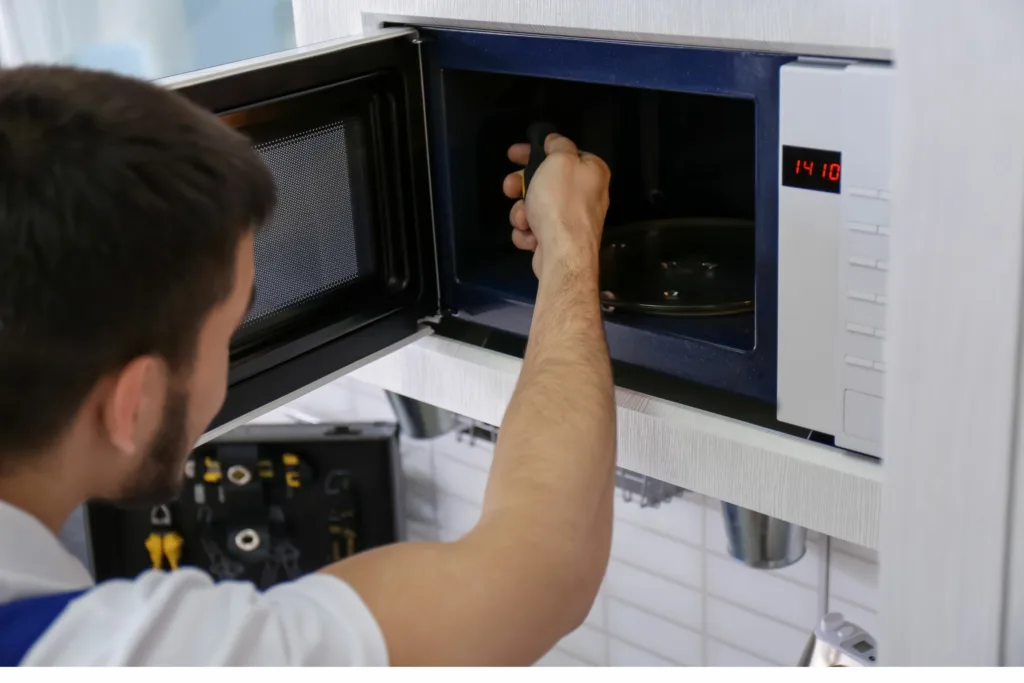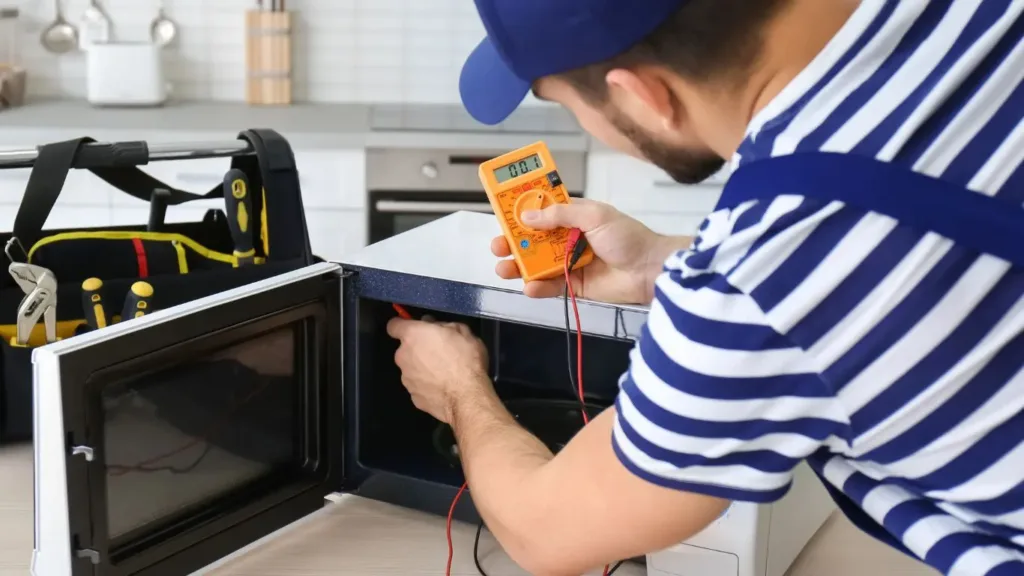
faulty microwave? Get in touch
Is your microwave refusing to turn on? You’re not alone. Many people face this frustrating issue. It can disrupt meal prep and leave you wondering what went wrong. In this blog post, we’ll explore common reasons why your microwave isn’t working. We’ll also offer troubleshooting tips to help you get it back in action. Don’t let a silent microwave ruin your cooking routine!
how to fix microwave not turning on
-
1. inspect the door latch.
- The door latch is a safety mechanism that prevents the microwave from operating if the door is open. If the latch is broken or misaligned, the microwave won't turn on.
- Open and close the door a few times to see if the latch is engaging properly.
- If the latch seems loose or broken, you may need to replace it. You can find replacement parts online or at a local appliance store.
-
2. Check the thermal fuse.
- The thermal fuse is a safety device that cuts off power to the microwave if it overheats. If the fuse is blown, the microwave won't turn on.
- To check the thermal fuse, you'll need to remove the microwave's outer casing. Consult your owner's manual or look for instructions online for your specific model.
- Once you've found the the thermal fuse, use a multimeter to test it for continuity. If the fuse is blown, it will need to be replaced.
- You can buy a replacement thermal fuse online or at an appliance store.
-
3. test the main control board.
- The main control board is the brain of the microwave. If the board is faulty, the microwave won't turn on.
- Testing the main control board requires some electrical knowledge and a multimeter.
- If you're not comfortable working with electricity, it's best to call a qualified technician.
- If you do attempt to test the board yourself, be sure to unplug the microwave first and consult a wiring diagram for your specific model.
-
4. Inspect the high voltage components
- Caution: This step involves potentially dangerous high-voltage components. If you're not comfortable working with electricity, it's best to call a qualified technician.
- The high voltage components include the transformer, diode, and capacitor. These components can fail over time, preventing the microwave from turning on.
- To inspect these components, you'll need to remove the microwave's outer casing and discharge the high voltage capacitor (consult online resources for safe discharge methods).
- Visually inspect the components for any signs of damage, such as burn marks or loose connections.
- If you suspect a component is faulty, you can test it with a multimeter. However, replacing these components is best left to a qualified technician.
Tools
- 1. Screwdriver (Phillips head)
- 2. Multimeter (optional, but recommended)
Material
- 1. Replacement door latch
- 2. Replacement thermal fuse
- 3. Electrical tape

-
1. Why would a microwave suddenly stop working?
A sudden microwave malfunction can be quite inconvenient. Here are some common reasons why your microwave might have stopped working:
- Power Supply Issues: Make sure the microwave is properly plugged in and that the outlet is receiving power. Check your electrical panel for any tripped breakers or blown fuses.
- Door Malfunction: Microwaves are equipped with safety interlocks that prevent operation if the door is not securely closed. Verify that the door closes completely and the latch engages properly. A faulty door switch may also be the culprit.
- Internal Fuse: Microwaves contain internal fuses designed to protect the circuitry. These fuses can blow due to power surges or component failures.
- Component Failure: In some cases, the issue may stem from a malfunctioning component such as the magnetron, capacitor, or diode. These components require specialized knowledge to diagnose and repair, and it is recommended to contact a qualified technician.
If you have confirmed that the power supply and door are functioning correctly, it is advisable to consult a professional appliance repair service for further assistance. They possess the expertise to diagnose and address more complex issues safely and effectively.
-
2. Do microwaves have a reset button?
No, microwaves typically don't have a dedicated reset button like some electronics. If your microwave is acting up, the best way to "reset" it is usually to unplug it for a few minutes and then plug it back in. This allows the internal components to reset.
If that doesn't solve the problem, you might want to check your owner's manual for troubleshooting tips or contact the manufacturer for assistance.
